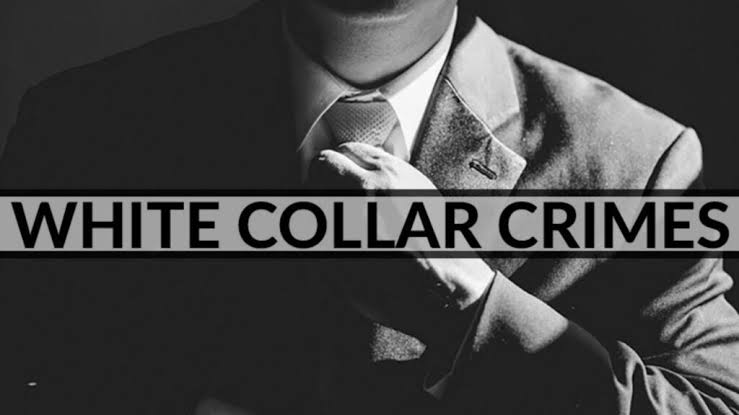Title: Crossing the Shadows- Interface of white-collar crimes and cyber law
Introduction
In a rapidly changing digital landscape where the physical and virtual worlds have grown ever more blurred, the relationship between cyber regulation and white-collar crime has proven to be an exciting and complex study area. White-collar crimes are quiet offenses that are typically motivated by financial gain. Fraud, embezzlement, money laundering, and insider trading are white-collar crimes. The legal framework that controls how people use computers and the internet is known as cyber law. In the realm of cybercrime, white-collar crimes—historically associated with non-violent, financially motivated offenses committed by people or organizations in positions of authority—have discovered a new breeding ground. This blog sheds light on the intricacies and problems presented by the exciting intersection of cyber law and white-collar crime.
White-collar criminals’ playground: the digital realm
White-collar crooks have discovered a lucrative arena to carry out their dishonest activities. These people commit various financial and business crimes, such as fraud, money laundering, insider trading, and embezzlement. Although bribery and document forgery were the usual methods to accomplish these crimes, the digital age has created many new opportunities for these criminals to influence and deceive.
In the current digital environment, criminals frequently use phishing and cyber fraud to trick people and businesses. These con artists may now impersonate reliable sources through phony emails or websites thanks to the growth of the internet, fooling people into divulging personal information or carrying out illicit transactions. Hackers attempting to steal essential data pose a threat not just to people but also to corporations and organizations. Financial losses, fines from the authorities, and reputational harm to an organization are all possible outcomes of these data breaches. The digital age has also made it simpler for anyone to engage in insider trading since they can now use immediate communication and online trading platforms to profit financially from confidential knowledge. Another emerging issue is money laundering through cryptocurrency. With the rise of virtual currencies, criminals have found ways to conceal illicit funds through complex networks, posing a significant challenge to governments and financial institutions.
Cyber Law’s Reaction to White-Collar Crimes
A wide range of financial and commercial misdeeds, including embezzlement, insider trading, fraud, and money laundering, are included in white-collar crimes. In the past, conventional techniques like document forgery, bribery, and accounting fraud were frequently used to commit these crimes. But these offenders have discovered even more opportunities to take advantage of as the digital era has grown.
Governments everywhere have responded to digital financial crimes by enacting laws and regulations; examples include the European Union’s General Data Protection Regulation (GDPR) to prevent data breaches and the United States’ Computer Fraud and Abuse Act (CFAA). Specialist law enforcement and cybersecurity units have also been formed to look into and stop these crimes. Examples are the FBI’s Cyber Crime Unit and INTERPOL’s Cybercrime Directorate. Given that cybercrimes affect the entire world, international collaboration is essential. Coordinated efforts and information exchange are made possible by policies such as mutual legal assistance treaties (MLATs) and the activities of international organizations. Moreover, digital forensics and diverse cybersecurity protocols reinforce these endeavors.
Contending the intersection of white-collar crimes and cyber law presents numerous obstacles:
Technology is constantly developing, opening up new opportunities for cybercrime. Regulations and enforcement must continuously adapt to keep up with this dynamic environment. It is challenging to determine jurisdiction in cyberspace, and legal frameworks need to be harmonized to keep hackers from taking advantage of loopholes. It is challenging for law enforcement to find and apprehend criminals since they frequently hide behind encryption and anonymity technology. It takes constant effort to strike a balance between security and privacy. Education and awareness initiatives are essential to enable people and organizations to identify and counteract cyber dangers and white-collar crime.

Conclusion
The intersection of cyber law and white-collar crimes is a dynamic and fascinating field where technical improvements, the criminal justice system, and evil intents come together. White-collar cybercrimes are becoming more common, and the fight against them will always be dynamic, requiring innovative approaches, international collaboration, and a thorough understanding of the digital world. It is an essential reminder that the legal system must continuously change and adapt to meet the difficulties of the digital age, just like the offenders it aims to apprehend.
Reference
- https://www.geeksforgeeks.org/white-collar-crimes-cyber-security/https://westlegaledcenter.com/program_guide/course_detail.jsf?courseId=100010854
- https://assets.ey.com/content/dam/ey-sites/ey-com/en_in/topics/assurance/forensic-investigations-compliance/the-changing-dynamics-of-white-collar-crime-in-india.pdf
Author:- Ankit Agrawal ,a Student of Symbiosis Law School, Noida
INDIAN FOERIGN POLICY REGARDING ISRAEL VS. HAMAS


